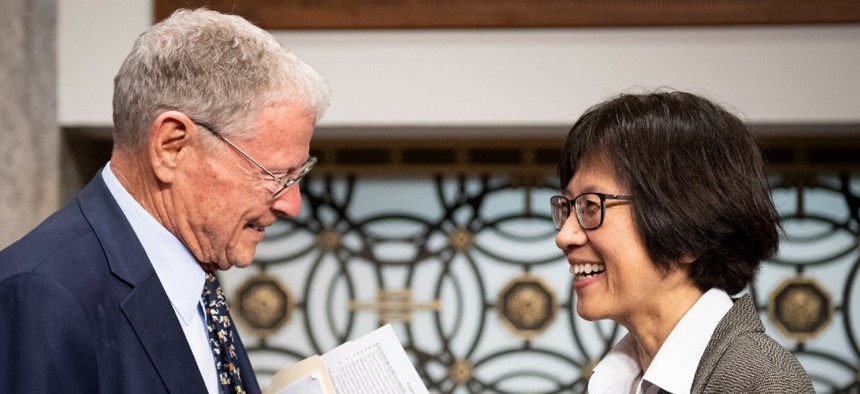DOD's tech chief lays out investment roadmap

DOD CTO Heidi Shyu speaks with Sen. Jim Inhofe, R-Okla., before the start of her confirmation hearing on May 25, 2021. Gettyimages.com/Caroline Brehman / Contributor
A new memo from the Defense Department's chief technology officer lays out where DOD plans to invest in so it can keep the U.S.' technological edge.
Want to know where you should be spending your research-and-development dollars?
The Defense Department has released a neat little six-page memo that lists key technologies it plans to invest in, which means you should be there too.
The technologies fall under three pillars -- mission focus, foundation building and succeeding through teamwork.
The six-page memorandum was released by Heidi Shyu, DOD's chief technology officer and undersecretary for research and engineering.
Shyu's memo is part of a DOD effort to counter gains by near-peer competitors and maintain the technological edge the U.S. currently holds.
“It is imperative for the Department to nurture early research and discover new scientific breakthroughs to prevent technological surprise,” Shyu writes in the document.
DOD breaks the technologies out into three categories with examples for each:
Seed areas of emerging opportunity
- Biotechnology
- Quantum science
- Future generation wireless technology
- Advanced materials
Effective adoption areas (where there is existing commercial activity)
- Trusted AI and autonomy
- Integrated network systems of systems
- Microelectronics
- Space technology
- Renewable energy generation and storage
- Advanced computing and software
- Human-machine interfaces
Defense-specific areas
- Directed energy
- Hypersonics
- Integrated sensing and cyber
Besides paying attention to the specific technology areas of interest, the memo also contains a short section at the end called “Bridget to the Future” that’s worth noting.
In that section, Shyu talks about how the effort will be DOD-wide and will require changes across the department.
Shyu's office will “support reforms to the pathways to rapidly field technologies,” she wrote. This includes “novel mechanisms and alternative pathways.”
That means more Other Transaction Authority contracts at the very least, but it could mean other mechanisms as well. Follow that space closely.
For another angle on Shyu's memo, read this article by Brandi Vincent at our sibling publication NextGov.


